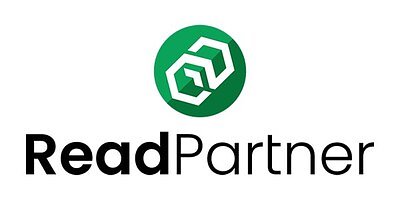
AI Arms Race: New Tool Fights Synthetic Misinformation Targeting Businesses
As AI-generated content floods the internet, a new platform aims to help organizations detect and mitigate the growing threat of disinformation campaigns. Is it enough to stem the tide?
AI Arms Race: New Tool Fights Synthetic Misinformation Targeting Businesses
Dover, Del. – October 31, 2025 – In an era defined by rapidly advancing artificial intelligence, the line between reality and fabrication is becoming increasingly blurred. A new feature launched by media intelligence firm ReadPartner Inc., called ProfileScreen, is entering the fray, aiming to equip businesses and organizations with the tools to detect and mitigate the growing threat of AI-generated misinformation.
ProfileScreen, integrated into ReadPartner’s existing platform, utilizes machine learning algorithms to identify artificially created content and flag potentially malicious actors. The launch comes as concerns about “synthetic media” – text, images, and videos created by AI – reach a fever pitch, with experts warning of escalating disinformation campaigns targeting businesses, journalists, and public opinion.
The Rise of the Machines – And Misinformation
According to a recent Statista survey, 68% of the global population is worried about the spread of misinformation. This concern isn't simply theoretical. Reports from cybersecurity firms and media outlets reveal a surge in AI-powered disinformation campaigns designed to manipulate markets, damage reputations, and sow discord.
“The speed and sophistication with which AI can generate convincing – but false – content is unprecedented,” explained a cybersecurity analyst who requested anonymity. “Traditional methods of identifying misinformation simply can’t keep pace.”
Industry reports confirm the analyst’s assessment. Research indicates that AI-generated content now exceeds organically created content online, creating a fertile ground for the spread of disinformation. The proliferation of “deepfakes” – manipulated videos that convincingly portray individuals saying or doing things they never did – is particularly concerning.
Beyond Detection: A Proactive Approach
While several companies offer tools to identify and flag misinformation, ReadPartner argues that ProfileScreen’s integration into a comprehensive media intelligence platform sets it apart. “It’s not just about identifying fake news,” says a ReadPartner spokesperson. “It’s about understanding the entire information ecosystem – who is creating the content, how it’s being disseminated, and what impact it’s having.”
The platform analyzes text, images, and videos for signs of manipulation, leveraging natural language processing (NLP) and computer vision. It also monitors online conversations and identifies potential disinformation networks. The goal is to provide organizations with early warning of potential threats, allowing them to take proactive steps to mitigate the damage.
The Competitive Landscape and Evolving Threats
The market for misinformation detection tools is becoming increasingly crowded, with companies like Brandwatch, Crisis24, and NewsGuard all vying for a piece of the action. However, experts believe that the key to success lies in adapting to the rapidly evolving threat landscape.
“AI is a double-edged sword,” explains an industry consultant specializing in disinformation. “While it can be used to create fake news, it can also be used to detect it. The challenge is to stay one step ahead of the attackers.”
One emerging trend is the use of AI-powered “persuasion bots” – automated accounts designed to spread disinformation and influence public opinion. These bots are becoming increasingly sophisticated, capable of engaging in realistic conversations and tailoring their messages to specific audiences.
Another concern is the use of AI to generate hyper-realistic deepfakes that are difficult to detect even by experts. As the technology improves, these deepfakes could be used to impersonate company executives, manipulate financial markets, or even interfere with elections.
Beyond the Technology: The Human Factor
While technology plays a crucial role in combating misinformation, experts emphasize that it’s not a silver bullet. The human factor remains critical.
“We need to educate the public about the dangers of misinformation and equip them with the skills to critically evaluate information,” says a media literacy advocate. “We also need to hold social media platforms accountable for the spread of fake news.”
Furthermore, organizations need to invest in training their employees to identify and report potential disinformation threats. A proactive approach, combining technology, education, and human vigilance, is essential to navigate the increasingly complex information landscape.
Is ProfileScreen Enough?
The launch of ProfileScreen represents a significant step forward in the fight against AI-generated misinformation. However, it’s just one piece of the puzzle. The threat is evolving rapidly, and organizations need to continuously adapt their strategies to stay ahead of the curve.
As AI continues to advance, the battle between truth and fabrication will only intensify. The stakes are high, and the future of information depends on our ability to develop effective tools and strategies to combat the growing tide of synthetic misinformation. The question isn't simply can we fight it, but whether we can do so fast enough.
